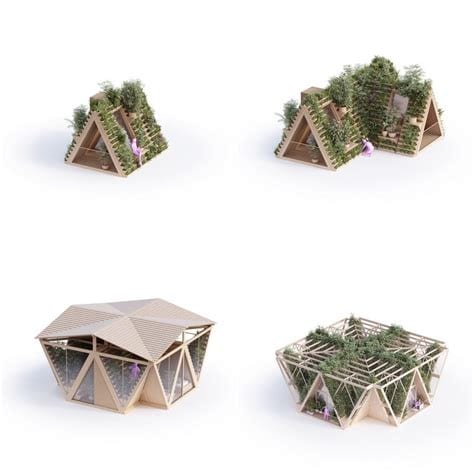Introduction to Modular Design for Electronics
Modular design is an approach to product development where a system is divided into smaller, independent modules that can be designed, tested, and assembled separately. Each module performs a specific function and connects to other modules through standardized interfaces. This allows for greater flexibility, reusability, and efficiency throughout the development process.
In the world of electronics, modular design tools are becoming increasingly popular for their ability to significantly reduce development time and costs. By breaking down complex systems into simpler, interchangeable components, engineers can work on multiple modules simultaneously, iterate quickly, and adapt to changing requirements more easily.
Key Benefits of Modular Design in Electronics Development
- Faster time-to-market
- Increased flexibility and adaptability
- Improved reusability and standardization
- Reduced complexity and risk
- Enhanced collaboration and parallel development
Modular Design Tools for Electronics
To effectively implement modular design in electronics development, engineers rely on a variety of specialized tools and platforms. These tools support different aspects of the modular design process, from concept creation to detailed design, simulation, and physical prototyping.
1. Modular CAD Software
Modular CAD (Computer-Aided Design) software allows engineers to create, edit, and manage 3D models of individual modules and entire systems. These tools provide a visual representation of the design, enabling engineers to experiment with different configurations, detect potential issues, and optimize the layout before moving to physical prototyping.
Some popular modular CAD software include:
- Autodesk Fusion 360
- SolidWorks
- Creo Elements/Direct Modeling Express
- SketchUp
| Software | Key Features | Price |
|---|---|---|
| Autodesk Fusion 360 | Cloud-based, parametric modeling, simulation, CAM | $495/year |
| SolidWorks | Powerful 3D modeling, simulation, data management | $3,995 – $7,995 |
| Creo Elements/Direct Modeling Express | Direct modeling, 3D printing support, lightweight | Free |
| SketchUp | Easy-to-use, web-based, extensive library of pre-built models | $119 – $299/year |
2. PCB Design Tools
Printed Circuit Board (PCB) design tools are essential for creating the electronic circuits that power each module. These tools allow engineers to lay out the components, route the connections, and simulate the circuit’s behavior before fabrication.
Some widely used PCB design tools with modular design capabilities include:
- Altium Designer
- Eagle PCB
- KiCad EDA
- OrCAD PCB Designer
| Software | Key Features | Price |
|---|---|---|
| Altium Designer | Unified design environment, 3D modeling, simulation | $2,935 – $7,695/year |
| Eagle PCB | Schematic capture, PCB layout, extensive part libraries | $740 – $1,640/year |
| KiCad EDA | Open-source, schematic capture, PCB layout, 3D viewer | Free |
| OrCAD PCB Designer | Constraint-driven layout, signal integrity analysis, DFM checks | $2,200 – $5,495/year |
3. Simulation and Analysis Tools
Simulation and analysis tools play a crucial role in validating the performance and reliability of individual modules and the overall system. These tools help engineers identify and resolve issues early in the design process, reducing the need for physical prototypes and minimizing the risk of costly redesigns.
Some common simulation and analysis tools for modular electronics design include:
- ANSYS Multiphysics
- COMSOL Multiphysics
- Matlab & Simulink
- LTspice
| Software | Key Features | Price |
|---|---|---|
| ANSYS Multiphysics | Finite element analysis, multiphysics simulation, optimization | $5,000 – $50,000+ |
| COMSOL Multiphysics | Finite element analysis, multiphysics simulation, application builder | $3,995 – $17,995+ |
| Matlab & Simulink | Numerical computing, signal processing, control systems design | $800 – $8,000+ |
| LTspice | SPICE simulation, schematic capture, waveform viewer | Free |
4. Version Control and Collaboration Platforms
Version control and collaboration platforms are essential for managing the complexity of modular electronics design. These tools allow teams to work together seamlessly, track changes, and maintain a single source of truth for all design files.
Some popular version control and collaboration platforms for electronics development include:
- Git & GitHub
- Altium 365
- Cadence Allegro EDM
- Zuken DS-2
| Platform | Key Features | Price |
|---|---|---|
| Git & GitHub | Distributed version control, issue tracking, pull requests | Free – $21/user/month |
| Altium 365 | Cloud-based PCB design collaboration, version control, data management | $500 – $2,000/year |
| Cadence Allegro EDM | Data management, version control, design collaboration | Contact for pricing |
| Zuken DS-2 | Data management, version control, design reuse | Contact for pricing |

Implementing Modular Design in Electronics Development
To successfully implement modular design in electronics development, engineers should follow a structured approach that leverages the tools and best practices discussed above.
1. Define System Requirements and Functionality
The first step in modular design is to clearly define the overall system requirements and desired functionality. This involves breaking down the system into its core functions and identifying the inputs, outputs, and performance criteria for each.
2. Identify Modules and Interfaces
Based on the system requirements, engineers should identify the individual modules that will make up the system and define the interfaces between them. Each module should have a specific purpose and be as independent as possible from other modules.
3. Design and Simulate Modules
Using modular CAD software and PCB design tools, engineers can create detailed designs for each module. Simulation and analysis tools should be used to validate the performance and reliability of each module before moving to physical prototyping.
4. Prototype and Test Modules
Once the module designs are finalized, physical prototypes can be built and tested. This allows engineers to verify the functionality and compatibility of each module and identify any issues that may have been missed in the simulation stage.
5. Assemble and Test the Complete System
After all modules have been individually tested, they can be assembled into the complete system. Further testing should be conducted to ensure that the modules work together seamlessly and that the overall system meets the defined requirements.
6. Iterate and Optimize
Based on the results of the system testing, engineers may need to iterate on the design of individual modules or the overall system architecture. Modular design tools make it easier to make changes and improvements without having to start from scratch.

Real-World Examples of Modular Design in Electronics
Modular design has been successfully applied in various electronics industries, from consumer devices to industrial equipment and aerospace systems. Some notable examples include:
1. Smartphone Modular Design
Several smartphone manufacturers have experimented with modular designs, allowing users to upgrade or replace specific components like the camera, battery, or storage. Examples include the Fairphone 2 and the Moto Z series.
2. Modular Industrial Controllers
Industrial control systems often use modular designs to enable customization and scalability. For example, the Allen-Bradley ControlLogix series from Rockwell Automation features a modular architecture with interchangeable CPU, I/O, and communication modules.
3. Modular Satellite Systems
In the aerospace industry, modular design is used to create flexible and adaptable satellite systems. The OneWeb satellite constellation, for instance, uses a modular design with standardized components to enable rapid production and deployment of hundreds of satellites.

FAQ
1. What are the main advantages of using modular design in electronics development?
Modular design offers several key advantages in electronics development, including faster time-to-market, increased flexibility, improved reusability, reduced complexity, and enhanced collaboration.
2. What types of tools are used for modular electronics design?
Modular electronics design relies on a range of tools, including modular CAD software, PCB design tools, simulation and analysis tools, and version control and collaboration platforms.
3. How does modular design differ from traditional electronics design?
Traditional electronics design often involves creating a monolithic system where all components are tightly integrated. In contrast, modular design breaks the system down into smaller, independent modules that can be designed, tested, and assembled separately.
4. What industries commonly use modular design for electronics?
Modular design is used in various electronics industries, including consumer electronics, industrial automation, aerospace, and telecommunications.
5. What challenges may be encountered when implementing modular design in electronics development?
Some challenges in implementing modular design include defining clear interfaces between modules, ensuring compatibility and interoperability, managing the increased complexity of multiple modules, and balancing modularity with overall system performance and cost.
Conclusion
Modular design tools offer a powerful approach to reducing development time and costs in electronics development. By breaking down complex systems into smaller, independent modules, engineers can work more efficiently, iterate quickly, and adapt to changing requirements.
To successfully implement modular design, engineers should leverage a range of specialized tools, including modular CAD software, PCB design tools, simulation and analysis tools, and version control and collaboration platforms. By following a structured approach and adhering to best practices, electronics developers can harness the full potential of modular design to create innovative, flexible, and reliable products in less time and at lower costs.
As the demand for faster, smarter, and more adaptable electronics continues to grow, modular design tools will play an increasingly critical role in shaping the future of the industry.

No responses yet